Last year, I did a dingo DNA test to find out more about our dingoes’ genetics. It’s vital that we understand dingo genetics, as this informs government policy and whether or not dingoes are protected. Currently, dingoes are classified as native animals but are also classified as “wild dogs” under government “wild dog management” policies. This means Australian dingoes are poisoned, hunted and killed, often through inhumane methods.
DNA tests: Why dingo genetics matters
Many Australian states and territories have laws which don’t protect the Australian dingo, despite dingoes being classified as a native Australian animal.
In fact, the laws actually support the killing of Australian dingoes. The laws refer to this as their wild dog management policies, clearly defining dingoes, wild dogs and dingo hybrids as pests to be managed.
Victoria is a bit of an exception here, but not really — in Victoria, the dingo is listed as a threatened, protected species, however, their wild dog policies are still leading to dingo deaths, and doing so legally because they also have laws which allow exemptions. Find out more at Defend the Wild.
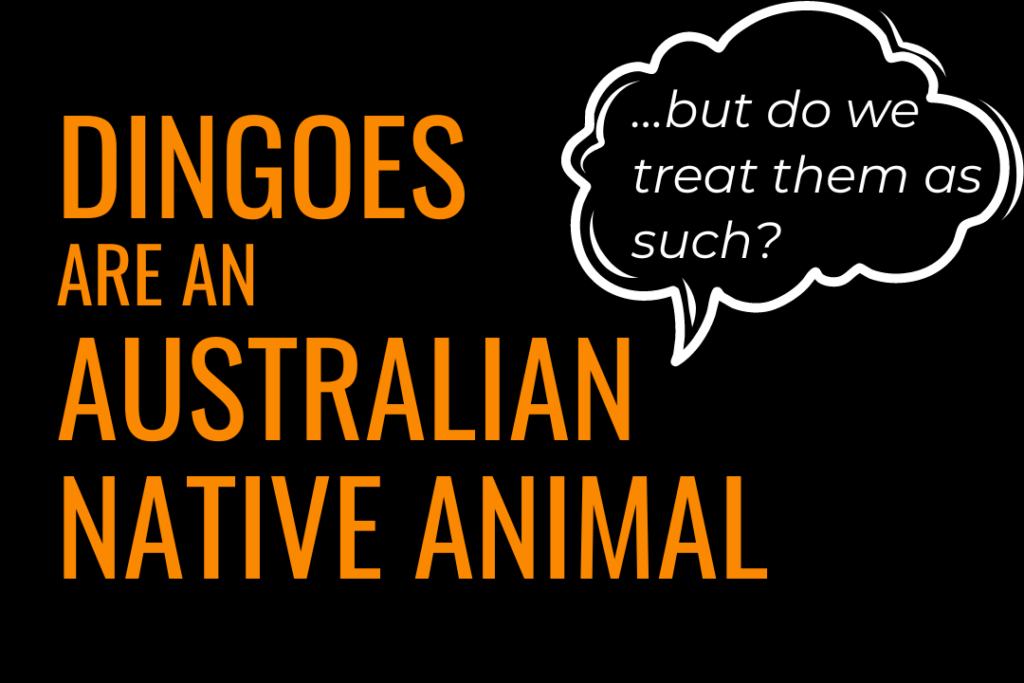
Research into dingo DNA by Dr Kylie Cairns
Dr Kylie Cairns from the School of Biological Earth and Environmental Sciences is conducting important research around dingo genetics. Understanding dingo genetics can significantly impact on our dingo population by influencing wild dog management policies.
Currently wild dog management policies recommend the use of 1080 poison, trapping and shooting of wild dogs, including dingoes. There are many problems with this, for example, 1080 doesn’t discriminate — any animal which consumes 1080 poison or consumes an animal which has died from 1080, will die, including domestic dogs. Dying from 1080 poisoning is painful and despite being labelled as such, it is far from humane.
Research into dingo genetics may also lead to more effective and less lethal methods of managing dingoes and dogs around livestock. For example, in 2015 a paper was published that estimated that 59% of “wild dogs” in Western Australia were pure dingoes, but in 2021, Dr Kylie Cairns found that over 90% of “wild dogs” in Western Australia are actually pure dingoes, not dogs or hybrids. Our “wild dog” programs in Western Australia are not just killing dogs, but primarily killing our native Australian dingo.
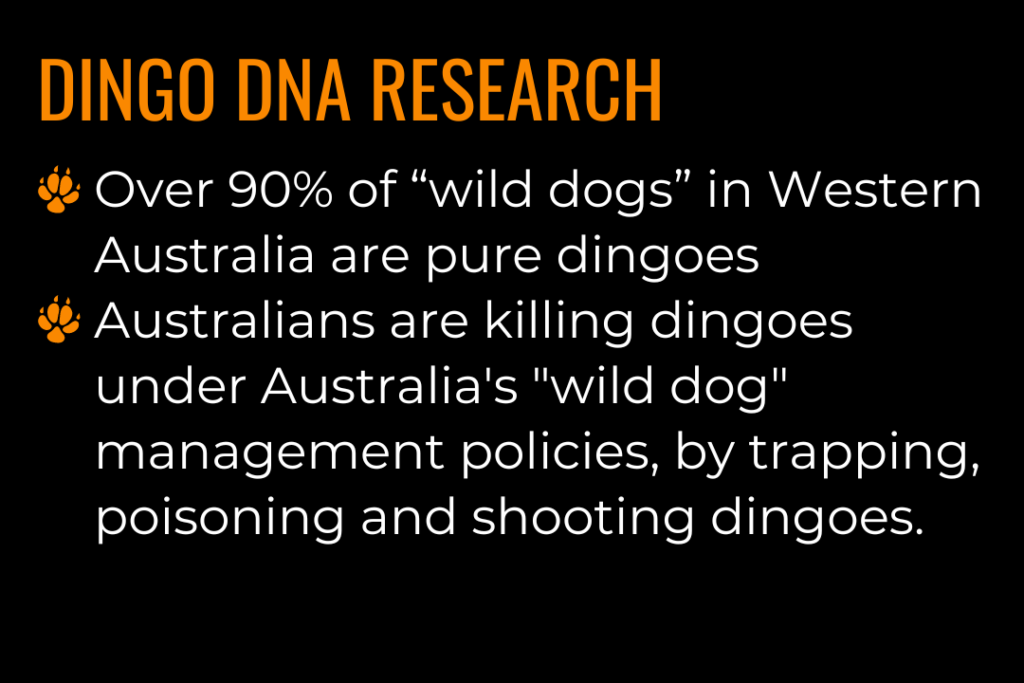
Dingo ecotypes
In addition to supporting Dr Cairns’ research, by completing dingo DNA tests, we can find out what type Rusty and Jalba are. There are three main ecotypes of dingo in Australia: desert dingo, alpine dingo and tropical dingo.
We were told that Rusty was born in the Gascoyne region of Western Australia, which is pretty much desert, so our guess is that he’s a 100%, or close to 100%, desert dingo. Jalba was found further north in the Pilbara, so it’s possible he’s a tropical dingo.
Looking at our dingoes, Rusty looks like a typical dingo, he looks like something out of a book, like a dingo you’d see at the zoo, on TV and in books. He’s a golden colour, with a lean body, narrow shoulders, almond eyes and constantly pointy ears.
What a lot of people don’t realise is that dingoes come in many many colours and they don’t always have the typical lean body that is seen in common media. This misconception, combined with other factors such as government policy, likely contribute to the avoidable dingo deaths in Australia.
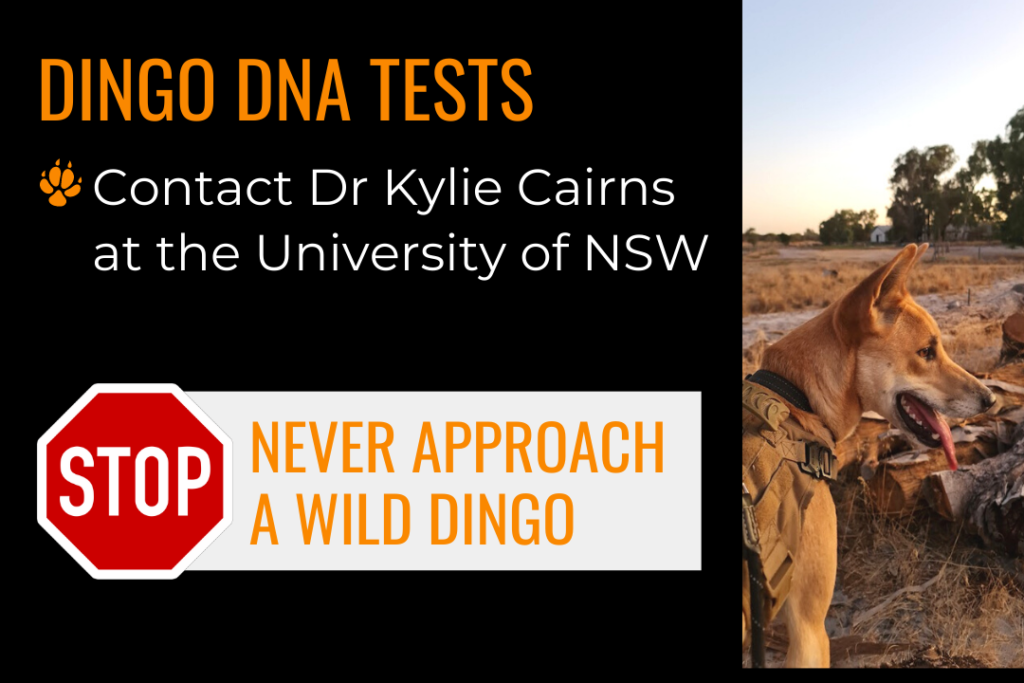
How you can check your dingo’s DNA
Don’t try this in the bush!
Rusty and Jalba are our adopted dingoes, orphaned and rescued from the wild. They’ve been in our family for a little while now and are comfortable with me approaching them, holding them, and doing things like this dingo DNA test.
Never approach a wild dingo!
Dr Cairns was kind enough to send us a couple of dingo DNA test kits so that we could test Rusty and Jalba. Inside the kit, there was a consent form and supplies to complete a cheek swab. The instructions were to take the DNA sample at least two hours after a dingo has eaten, and at least 30 minutes after drinking.
The first step was to take a cheek swab from each dingo by gently but firmly rolling the swab against the inside of their cheek, for about 15 seconds or 20 turns. Ideally, two swabs should be collected for each dingo.
The second step was to allow the swabs to air dry for 30-60 minutes. I then placed the dry swabs into labelled envelopes, one for each dingo. You can watch a video of me doing the dingo DNA test here on YouTube.
The results of our dingo DNA tests
Dr Cairns confirmed through DNA tests that both Rusty and Jalba are pure dingoes with no evidence of domestic dog ancestry and that their DNA is consistent with other dingo samples from Western Australia.
Genetic data was collected from the supplied sample and compared to an existing collection of dingo samples from across Australia, and a collection of domestic dog samples. Analyses were carried out to assess the percent dingo versus dog ancestry and which dingo ecotype this sample falls within. Ancestry analyses are based on more than 150,000 genetic markers compared to previous dingo DNA testing methods which rely on only 23 markers.
– Dr Kylie Cairns, University of NSW
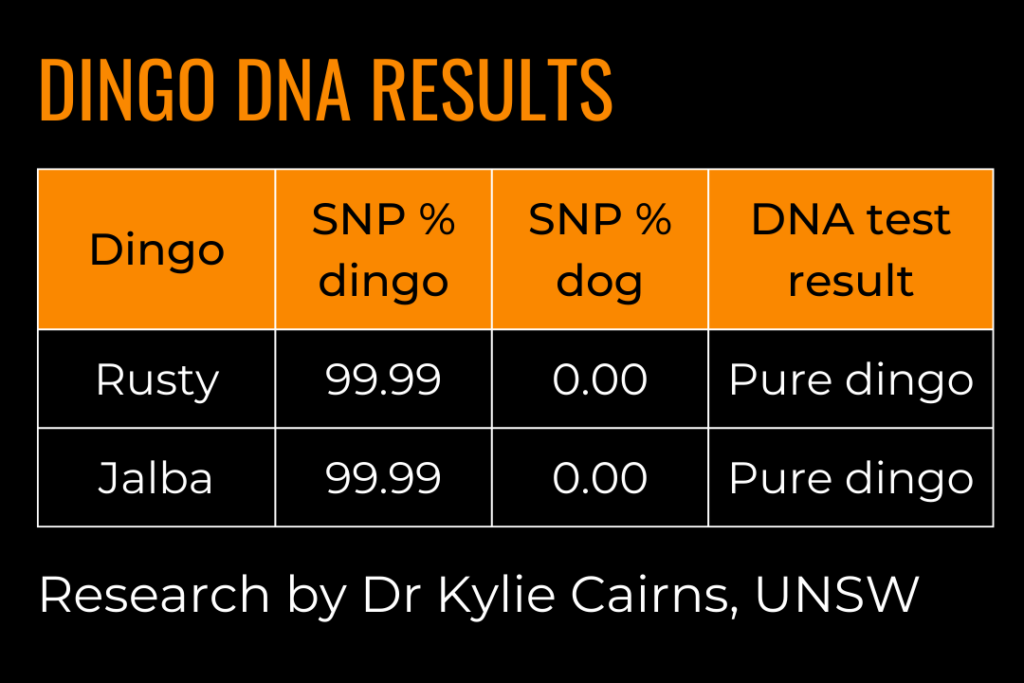
If you’d like to learn more about Dr Kylie Cairns and her research into dingo genetics, please visit Dr Cairns’ website. We also talk about dingo DNA testing in my interview with The Dingo Channel.
To hear an interesting perspective on wild dog management on pastoral land in Western Australia, check out The Dingo Channel’s interview with David Pollock who runs Wooleen Station with his wife Frances Pollock.
To find out more about our adopted wild-born dingoes, check out my website and YouTube channel @intrepidworld.
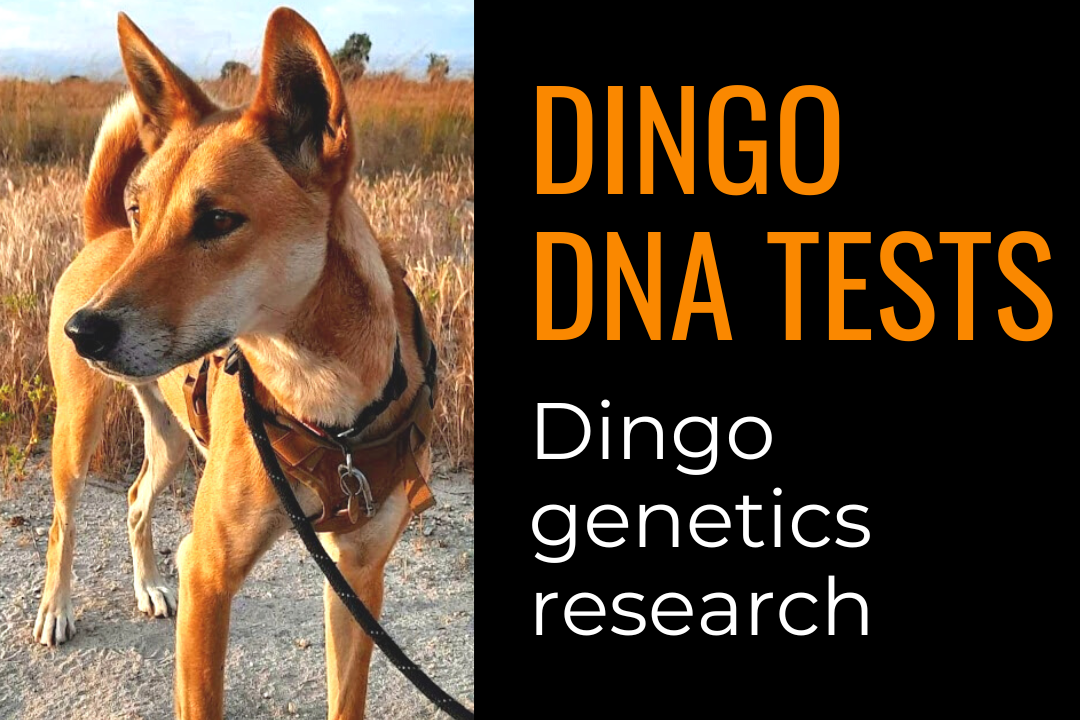
0 Comments